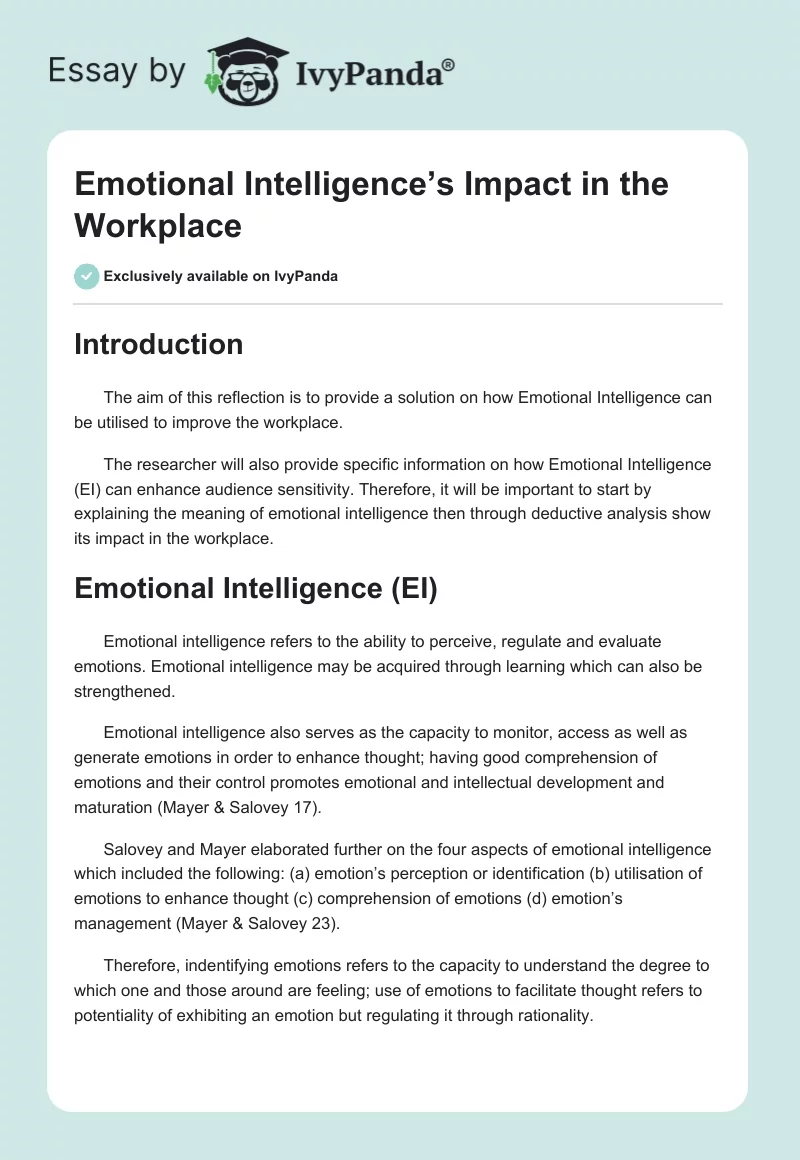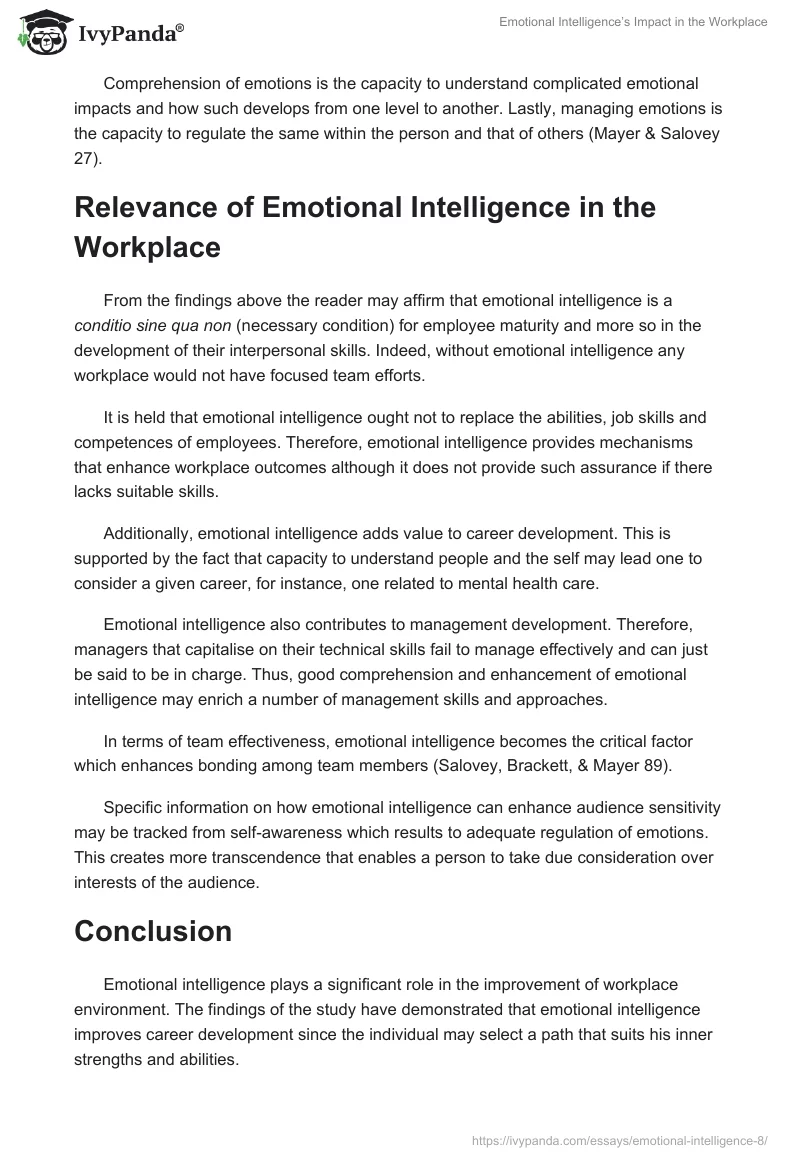Introduction
The aim of this reflection is to provide a solution on how Emotional Intelligence can be utilised to improve the workplace.
The researcher will also provide specific information on how Emotional Intelligence (EI) can enhance audience sensitivity. Therefore, it will be important to start by explaining the meaning of emotional intelligence then through deductive analysis show its impact in the workplace.
Emotional Intelligence (EI)
Emotional intelligence refers to the ability to perceive, regulate and evaluate emotions. Emotional intelligence may be acquired through learning which can also be strengthened.
Emotional intelligence also serves as the capacity to monitor, access as well as generate emotions in order to enhance thought; having good comprehension of emotions and their control promotes emotional and intellectual development and maturation (Mayer & Salovey 17).
Salovey and Mayer elaborated further on the four aspects of emotional intelligence which included the following: (a) emotion’s perception or identification (b) utilisation of emotions to enhance thought (c) comprehension of emotions (d) emotion’s management (Mayer & Salovey 23).
Therefore, indentifying emotions refers to the capacity to understand the degree to which one and those around are feeling; use of emotions to facilitate thought refers to potentiality of exhibiting an emotion but regulating it through rationality.
Comprehension of emotions is the capacity to understand complicated emotional impacts and how such develops from one level to another. Lastly, managing emotions is the capacity to regulate the same within the person and that of others (Mayer & Salovey 27).
Relevance of Emotional Intelligence in the Workplace
From the findings above the reader may affirm that emotional intelligence is a conditio sine qua non (necessary condition) for employee maturity and more so in the development of their interpersonal skills. Indeed, without emotional intelligence any workplace would not have focused team efforts.
It is held that emotional intelligence ought not to replace the abilities, job skills and competences of employees. Therefore, emotional intelligence provides mechanisms that enhance workplace outcomes although it does not provide such assurance if there lacks suitable skills.
Additionally, emotional intelligence adds value to career development. This is supported by the fact that capacity to understand people and the self may lead one to consider a given career, for instance, one related to mental health care.
Emotional intelligence also contributes to management development. Therefore, managers that capitalise on their technical skills fail to manage effectively and can just be said to be in charge. Thus, good comprehension and enhancement of emotional intelligence may enrich a number of management skills and approaches.
In terms of team effectiveness, emotional intelligence becomes the critical factor which enhances bonding among team members (Salovey, Brackett, & Mayer 89).
Specific information on how emotional intelligence can enhance audience sensitivity may be tracked from self-awareness which results to adequate regulation of emotions. This creates more transcendence that enables a person to take due consideration over interests of the audience.
Conclusion
Emotional intelligence plays a significant role in the improvement of workplace environment. The findings of the study have demonstrated that emotional intelligence improves career development since the individual may select a path that suits his inner strengths and abilities.
Other contributions refer to management development not to mention the strengthening of bonds among team members.
Works Cited
Mayer, John and Salovey, Peter. “What is emotional intelligence?” In P. Salovey & D.
Sluyter (Eds). Emotional development and emotional intelligence: Implications for educators (1997): 3-31. New York. Print.
Salovey, Peter, M. Brackett, and J. Mayer. Emotional Intelligence: Key Readings on the Mayer and Salovey Model, NPR Inc., 2004. Print.


